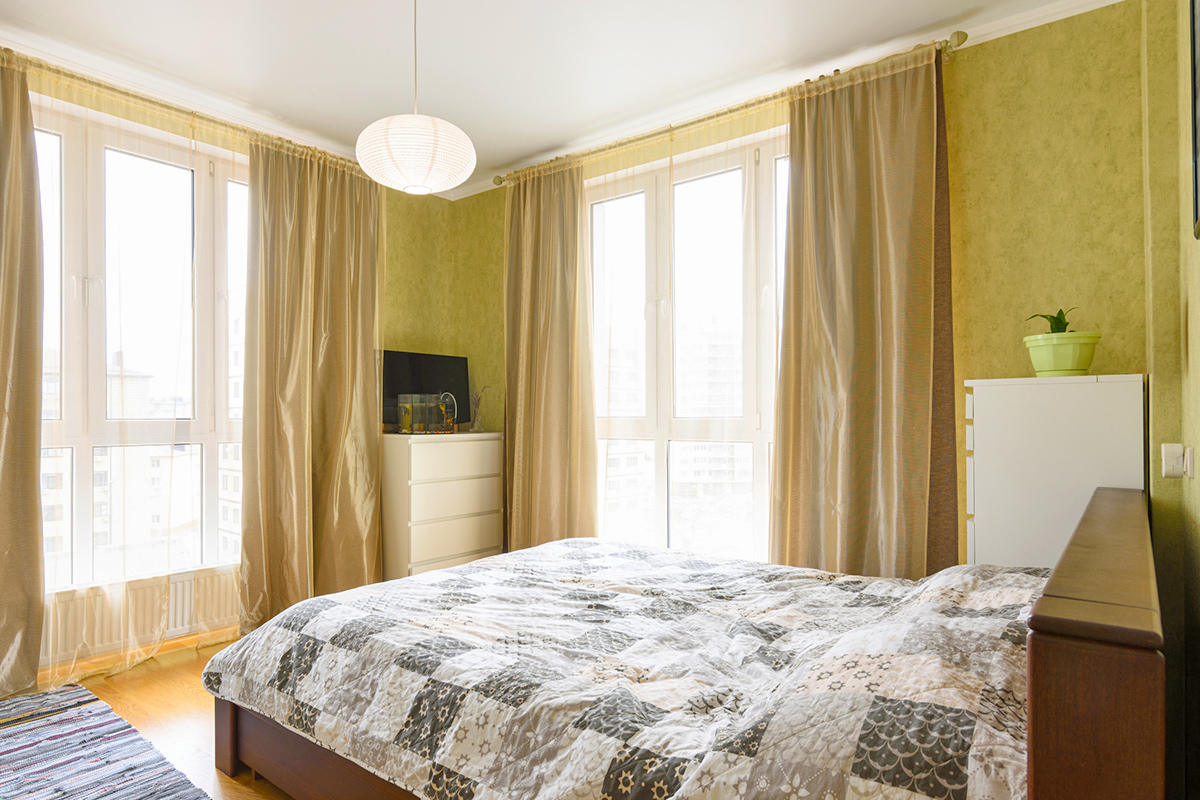Never underestimate the power of a perfectly hung curtain. Curtains add drama, sophistication, texture, and even the illusion of extra height to a space — and that’s all on top of their practical jobs of providing privacy and diffusing sunlight. However, the placement of the curtains is what will truly make or break their aesthetic appeal.
Hung too low, curtains can cause your windows to feel squat. Hung high, they transform the entire space with a grand effect. When in doubt, remember these guidelines: Go higher, wider, and longer.
Raise the Rod
A common mistake is hanging a curtain rod directly above the window frame, says interior designer Vicki Zagrodnik of Madison, Wisconsin-based Sims. Instead, aim higher. “Hanging curtain rods closer to the ceiling will make the room taller and elegant,” she explains.
Zagrodnik also recommends extending the rod beyond the window frame to further trick the eye. “Extending the curtain rod on both sides of the windows ensures that the curtain will not block the natural light coming in and will give an illusion of oversized windows,” she says. It may help to envision your curtains framing an entire wall, not just a single window.
More from our network
House Outlook is part of Inbox Studio, which publishes content that uplifts, informs, and inspires.
Length and Width Are Important Too
Length matters just as much as height. A curtain that’s too short looks awkward and unfinished. “Let the curtains puddle slightly or have them graze the floor for a more relaxed vibe,” Zagrodnik says. “The length of the curtain reflects the overall design of the room. Short curtains may make the room look cheaper and smaller.”
Fullness is another often-overlooked detail that makes a big difference. A good rule of thumb is to choose curtains that are about twice the width of your window. This prevents them from looking skimpy when closed and creates a more graceful drape when open.
For an especially polished look, Zagrodnik recommends layering a sheer panel with a heavier drape. “That [will] give you soft, filtered light during the day and privacy or darkness at night,” she says.



















